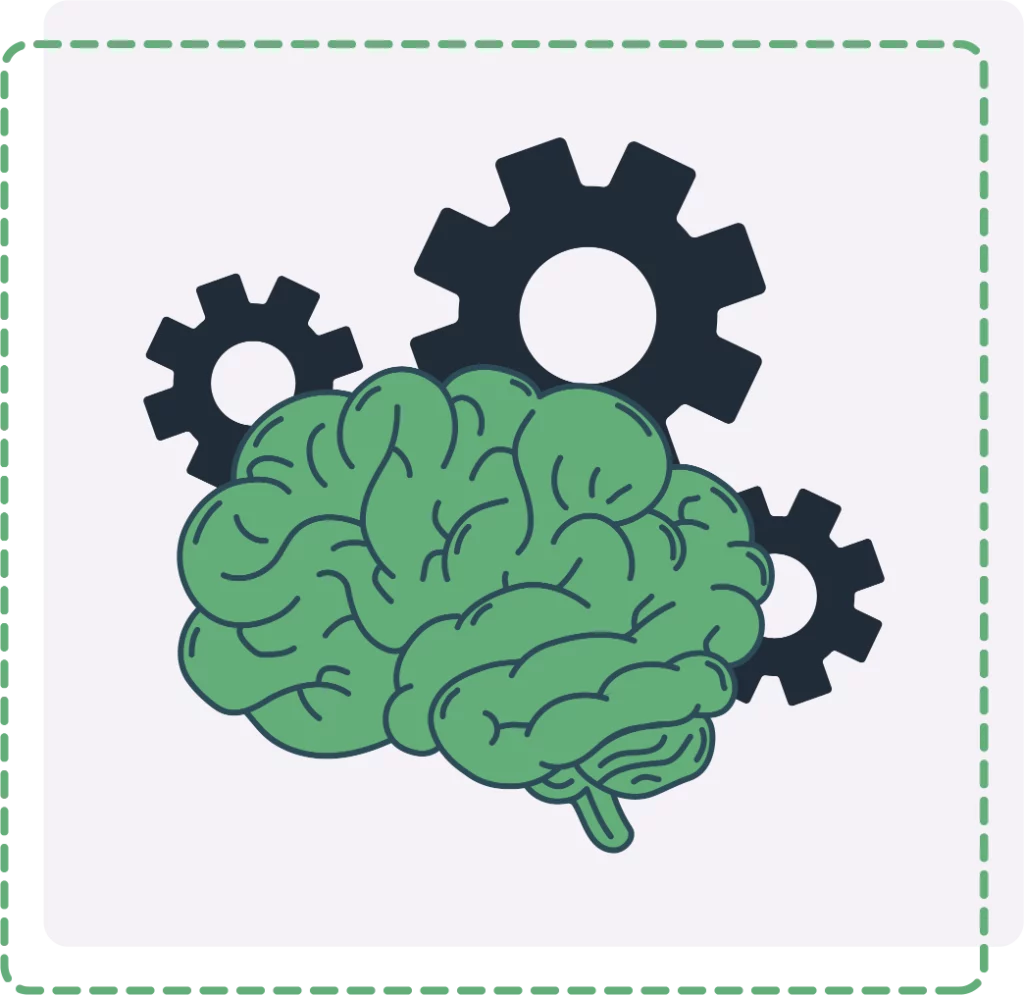Market segmentation is the categorisation of existing and potential consumers based on common characteristics such as interests, needs and wants. Effectively utilising segmentation enables brands to optimise both marketing functions and customer experience. Market segmentation, although potentially financially difficult, fundamentally promotes cost-effective and efficient communication.
Beyond this, effectively segmenting markets will help inform and focus the overall strategic direction of brands as businesses. The fundamental aim of market segmentation is to enable brands to better position and target their products or services. There are four main types and categories of segmentation:
Table of Contents
Demographic Segmentation

Demographic segmentation is the fundamental basis of the segmentation and considered the simplest and most inexpensive type of segmentation. Demographic segmentation sub-divides a group of the general population based on groupings such as age, gender, occupation and income etc. Collation and analysis of demographic segmentation is fundamentally cost-effective and accessible.
There are not substantive barriers to conducting this form of segmentation for organisations small marketing budgets. However, relying solely on this form of segmentation is a flawed approach as it is also considered imprecise and oversimplified. This stems from a lack of emphasis and focuses on individual wants and needs. As such businesses need to use demographic segmentation as a building block and not a sole pillar.
Geographic Segmentation

Geographic segmentation is the segmentation based on consumer geography. Interlinked with the geographic aspects of demographic segmentation, these elements are consolidated and further streamlined, becoming geo-demographics.

This form of segmentation is generally considered to be objective and specific. At its core, it considers the geographic distinctions of populations and their preferences and consumption.
Analysing and then contrasting different geographic areas and the nature of their consumption forms the basis of this approach. There is a consensus for the areas of geography considered – continental, nationwide, citywide then urban, suburban, rural etc and can become as focused for example postcode.
Geographic segmentation provides a textured understanding of where existing and potential consumers live and the nature of their consumption. Businesses deploy these informational findings to factor into decision making concerning recruitment, advertising and retail locations. Geographic segmentation extends to providing the basis of understanding linguistic distinctions in regions and areas which is fundamental to providing clear, appropriate and relevant communication to varying populations.
Behavioural Segmentation

Behavioural segmentation segments consumers based on their behaviour through the metrics of usage, consumption, purchasing habits and ownership. This segmentation examines and utilises an understanding of consumers in store and digital footprint and behaviour.
This information collation is easily facilitated by digital tools and analysed through, for example, Google Analytics. This information can also be obtained through electronic point of sales systems, quick response codes, standard product codes and integrated purchasing systems.
This forms the basis of the profession of consumer purchase and transactional data. The collation of this data and its analysis allows businesses to make recommendations and offerings that will more likely appeal with particular market segments.
Fundamental to this and facilitated by this analysis is the monitoring of regional patterns and trends.This then informs both strategic decision-making concerning product/service provision and offering as well as strategic marketing decision making and resource allocation.
Behavioural segmentation also allows businesses to identify the frequency and monetary value of individual purchases, enabling them to identify profitable market segments to target. Social media also allows businesses to monitor and track what consumers are saying about their products’ service.
This allows businesses to gain an insight into customer perceptions and enables these organisations to alter how they communicate with consumers accordingly. Digital and electronic tools and algorithms enable businesses to identify dwell time, bounce rate and instore actions. This enables brands to redesign and/or refocus websites and digital promotions, streamlining offerings and content with a focus on relevant demographics.
Optimised user experience both digital and in-store is only possible through a focus on personalised content and experience. Personalised content and experience are created by and contingent on behavioural segmentation.
Psychographic Segmentation

Psychographic segmentation is fundamentally concerned with the benefits sought in the consumption choices and behaviour in consumers. There is an emphasis on understanding attitudes and perceptions about products, industries and culture. This form of segmentation is also grounded in psychographics and consumer lifestyles.
Psychographics is concerned with the analysis of consumer’s activities, interests and opinions. Psychographics provides a personalised understanding of existing and potential consumers and it allows brands to put similar consumers into relevant categories. General motivations of consumers towards a range of issues are considered to understand what influences the purchasing process.
Brands must focus on what they want to know, so they can deploy this qualitative information effectively. Relevant information then forms the basis of targeted communication directed at assigned segments. Deploying psychographic findings in strategic marketing functions provide personalised insight into consumers, understanding their likes and dislikes, their cultural identity and fundamentally the overall determining factors of the consumers purchasing process.
Market Segmentation Basics: Unleashing the Power of Targeting
Imagine throwing a dart blindfolded. Sure, you might hit the target eventually, but wouldn’t it be better to aim with precision? That’s exactly what market segmentation does for your marketing efforts. It’s like putting on glasses for your brand, allowing you to see your customers clearly and tailor your marketing to their specific needs and desires.
Diving into the Definition:
Market segmentation simply refers to the process of dividing a broad market into smaller, distinct groups of customers based on shared characteristics. This allows you to understand the unique preferences, behaviors, and pain points of each group, enabling you to craft targeted marketing strategies that resonate with each segment.
The Segmentation Toolbox:
Think of market segmentation as a toolbox filled with different lenses for analyzing your audience. The most common types of lenses include:
- Demographic Segmentation: This categorizes customers based on age, gender, income, education, family size, and other objective characteristics. Imagine creating campaigns specifically for millennials, working mothers, or high-income earners.
- Behavioral Segmentation: This focuses on how customers behave, including their purchase habits, brand preferences, online activity, and media consumption. Picture personalized promotions based on past purchases or website browsing history.
- Psychographic Segmentation: This delves into customers’ values, interests, personalities, lifestyles, and attitudes. Consider tailoring your messaging to resonate with adventurous thrill-seekers, environmentally conscious consumers, or tech-savvy early adopters.
- Geographic Segmentation: This groups customers based on their location, such as country, region, city, or even neighborhood. Think about regional marketing campaigns or location-specific offers relevant to local needs.
The Power of Precision:
Market segmentation isn’t just about neatly categorizing customers; it’s about unlocking the immense potential of targeted marketing. Here’s how it fuels your brand’s success:
- Increased Marketing Efficiency: By focusing on specific groups with relevant messaging, you avoid wasting resources on broad, generalized campaigns. You spend less and achieve more!
- Enhanced Customer Experience: Personalization is key in today’s competitive market. Segmentation allows you to tailor your marketing to individual needs and preferences, creating a more satisfying and engaging experience for your customers.
- Boosted Campaign Performance: Targeting the right segment with the right message leads to higher engagement, better conversion rates, and ultimately, increased sales and brand loyalty.
In a nutshell, market segmentation is about recognizing that one size doesn’t fit all in the world of marketing. By understanding your customers’ unique characteristics and targeting them with precision, you unlock the power to achieve marketing success with greater efficiency and impact.
Big Brands, Bigger Results: Unleashing the Potential of Market Segmentation
For giants of the marketplace, navigating the vast consumer landscape can be a daunting task. But market segmentation empowers big brands to transform from towering monoliths into nimble ninjas, wielding targeted strategies to conquer even the most diverse audiences. Let’s explore the bountiful benefits that segmentation offers to these industry behemoths:
1. Precision Targeting: Bullseye, Not Blunderbuss:
Gone are the days of one-size-fits-all campaigns. Segmentation allows big brands to identify the bullseyes within their audience. Imagine crafting luxurious experiences for high-end fashion aficionados, offering adventure gear to thrill-seeking millennials, or promoting family-friendly features to busy working parents. Each campaign resonates deeply, maximizing efficiency and minimizing wasted resources.
2. Brand Chameleon: Adapting to Evolve:
Market trends may shift like sand dunes, but with segmentation, big brands can remain agile and relevant. Imagine adjusting brand tone and messaging to resonate with Gen Z’s playful humor, catering to health-conscious consumers with organic product lines, or offering culturally specific campaigns in diverse markets. This dynamic approach fosters deeper connections and builds lasting brand loyalty across various segments.
3. Deep Dives: Unveiling Hidden Needs:
Segmentation isn’t just about demographics; it’s about delving into the psyche of each target group. Big brands can analyze purchase patterns, social media behavior, and customer feedback to understand the unique needs, challenges, and pain points of each segment. Imagine identifying a hidden desire for environmentally sustainable products within a seemingly mainstream group, or discovering a previously untapped demand for niche services through customer data analysis. This insider knowledge allows brands to innovate and develop offerings that perfectly fit the bill for each segment.
4. Expansion Horizons: Beyond the Familiar:
Market segmentation isn’t just about milking existing customer bases; it’s about discovering new frontiers. Big brands can analyze data to identify emerging trends and niche segments yet to be tapped. Imagine uncovering a previously overlooked demographic craving high-tech fitness wearables, or recognizing a burgeoning market for personalized beauty products within a specific cultural group. This foresight allows brands to expand their reach, capture new audiences, and claim lucrative market positions before the competition catches on.
5. Data-Driven Decisions: From Gut to Genius:
Big brands possess mountains of data, but without segmentation, it’s just a data graveyard. Imagine leveraging customer insights to tailor pricing strategies for budget-conscious segments, or using purchase history to personalize product recommendations for loyal customers. This data-driven approach optimizes every step of the marketing journey, boosting efficiency, engagement, and ultimately, revenue generation.
Remember, market segmentation isn’t just a tool for big brands; it’s a superpower. By embracing its potential, industry giants can transform from lumbering beasts into agile gazelles, conquering diverse audiences, uncovering hidden opportunities, and leaving their mark on the ever-evolving landscape of the marketplace.
Small Brands, Big Impact: Leveraging Segmentation for Targeted Triumph
For small businesses navigating the marketplace, every resource counts. That’s where market segmentation becomes a beacon of hope, guiding them towards success with laser focus. Let’s unveil how segmentation empowers small brands to punch above their weight and conquer their niche:
1. Resourceful Targeting: Maximize with Precision:
Small brands can’t afford shotgun marketing. Segmentation allows them to pinpoint the ideal audiences most likely to resonate with their offerings. Imagine focusing social media campaigns on eco-conscious millennials on Pinterest or targeting local events frequented by working professionals. This laser-sharp targeting maximizes the impact of limited resources, leading to higher engagement and better conversions.
2. Branding with a Bullseye: Speak Their Language:
One-size-fits-all branding? Not for small brands! Segmentation empowers them to craft unique identities and messaging for each target group. Imagine creating playful packaging and lighthearted tone for young families, highlighting sophisticated features and technical aspects for tech-savvy professionals, or prioritizing natural ingredients and ethical sourcing for health-conscious consumers. This tailored approach fosters deeper connections and builds brand loyalty within specific niche markets.
3. Community Champions: Building Strong Bonds:
Small brands thrive on personal connections. Segmentation allows them to delve deeper into the needs and preferences of their target audiences. Imagine hosting meet-and-greet events for local artisan communities, creating online forums for passionate hobbyists, or offering personalized consultations for busy entrepreneurs. This builds strong relationships, fosters brand advocacy, and turns customers into loyal community members.
4. Untapped Opportunity: Unearthing Hidden Gold:
Giants may overlook niche needs, but small brands, armed with segmentation, can discover hidden opportunities. Imagine analyzing data to identify a growing demand for vegan pet food, recognizing a previously unnoticed desire for handcrafted accessories within a cultural community, or spotting a gap in the market for sustainable office supplies. This foresight allows small brands to fill unmet needs, cater to underserved audiences, and carve out profitable niches for themselves.
5. Lean and Mean: Data-Driven Decisions:
Small brands can’t afford gut feelings; they need cold, hard data. Segmentation empowers them to leverage customer insights to optimize every aspect of their business. Imagine analyzing website traffic to personalize product recommendations, using survey data to refine pricing strategies, or employing social media engagement metrics to tailor content for specific segments. This data-driven approach minimizes waste, increases efficiency, and maximizes every precious resource.
Choosing Your Champions: Navigating the Art of Market Segmentation
Market segmentation is a powerful tool, but identifying the right segments to target is like picking the perfect ingredients for a winning recipe. Here’s your guide to navigating this crucial step:
Tip 1: Unleash the Detective Within:
- Data Dive: Gather demographic, psychographic, and behavioral data through surveys, website analytics, social media insights, and customer feedback.
- Trend Tracking: Research industry trends, emerging needs, and competitor strategies to identify potential untapped segments.
- Listening Post: Actively engage with your audience through social media, forums, and customer interactions to understand their desires and pain points.
Tip 2: Mass Appeal vs. Niche Niche:
- Mass Marketing: Aims at a broad audience with a single message, ideal for well-established brands with diverse offerings.
- Niche Marketing: Targets a specific segment with tailored messaging and offerings, ideal for smaller brands or unique products.
Weighing the Scales:
- Attractiveness: Consider segment size, potential profitability, growth potential, and alignment with your brand values.
- Accessibility: Evaluate your ability to reach the segment through chosen channels, marketing budget, and resource availability.
Common Segmentation Approaches:
- Demographic: Age, gender, income, family size, location.
- Psychographic: Values, interests, personality, lifestyle.
- Behavioral: Purchase habits, brand preferences, online activity, media consumption.
- Needs-Based: Focuses on specific needs or pain points your product or service addresses.
- Value-Based: Groups customers based on their perceived value or contribution to your business.
Remember:
- Don’t Over-Segment: Too many segments can dilute your resources and messaging.
- Data-Driven Decisions: Leverage data to validate your segmentation choices and track their effectiveness.
- Flexibility is Key: Be prepared to refine your segments as market trends and customer preferences evolve.
Bonus Tip: Conduct pilot campaigns or test markets within potential segments to gauge their responsiveness and refine your targeting strategies before committing fully.
Choosing the right segments is a dynamic process, not a one-time decision. By following these tips, employing the right approaches, and constantly evaluating your choices, you can ensure your market segmentation strategy fuels your brand’s success and propels you towards targeted market victories.
From Segments to Success: Implementing Effective Market Segmentation
Identifying the right segments is just the first step. Now, it’s time to transform those segments into thriving communities and loyal customers. Let’s explore how to turn your segmentation strategy into an action plan that drives results:
1. Tailoring the Tune: Content and Campaigns with a Segment-Specific Beat:
- Content Creation: Develop unique content catered to each segment’s interests, preferences, and pain points. Imagine creating humorous Instagram reels for Gen Z, informative blog posts for tech-savvy professionals, or eco-conscious packaging and messaging for sustainability-focused consumers.
- Campaign Craft: Design targeted campaigns that resonate with each segment’s motivations and behaviors. Think about offering exclusive discounts to loyal customers, hosting workshops catered to specific hobbies, or partnering with influencers that align with your segments’ values.
2. Data Detectives: Tracking and Analyzing Segment Performance:
- Metrics Matter: Monitor key performance indicators (KPIs) for each segment, such as engagement rates, conversion rates, website traffic, and customer satisfaction. Think about using web analytics platforms, social media insights tools, and customer relationship management (CRM) systems to gather and analyze data.
- Segment Spotlight: Compare performance across segments to identify strengths and weaknesses. Imagine analyzing which campaigns resonate best with specific groups, where customer acquisition costs are lowest, and where churn rates are highest.
3. Adapting for Growth: Refine Your Strategies with Segment Insights:
- Data-Driven Decisions: Use insights from your analysis to adjust your strategies and improve performance. Imagine doubling down on successful campaigns for high-performing segments, refining messaging for less responsive groups, or even reconsidering the viability of certain segments based on data trends.
- Constant Evolution: Stay informed about emerging trends, changing customer needs, and competitor behavior. Be prepared to adapt your segmentation approach and refine your targeting strategies over time.
Remember:
- Personalization is Key: Treat each segment as a unique audience, not just a demographic checkbox.
- Segmentation is a Journey: It’s an ongoing process, not a one-time project. Be open to adjustments and refinements based on data and feedback.
- Invest in Tools: Utilize technology to analyze data, manage campaigns, and personalize communication with each segment.
Bonus Tip: Implement A/B testing to compare different content variations, campaign approaches, and messaging within segments. This allows you to continuously optimize your strategies for maximum impact.
By crafting segment-specific experiences, diligently tracking performance, and adapting your approach based on insights, you can transform your market segmentation strategy from a theoretical model into a powerful engine for customer engagement, brand loyalty, and ultimately, profitable growth.
Market Segmentation FAQ:
- How often should I re-evaluate my market segments? Regularly review your segmentation strategy at least once a year, or more frequently if market trends or customer needs change rapidly.
- Can I use multiple segmentation bases? Absolutely! Combining different bases like demographics, psychographics, and behaviors can create even more granular and insightful segments.
- What if my segments are too small? Consider focusing on niche markets with strong potential for growth and loyalty, or combine smaller segments with similar characteristics.
- What tools can I use for market segmentation? There are many tools available, from free options like Google Analytics and social media insights to paid tools like CRM systems and marketing automation platforms.
- I’m still unsure about which segments to target. What should I do? Conduct pilot campaigns or test markets within potential segments to gauge their responsiveness and refine your targeting before committing fully.
Summary of Market Segmentation
Market segmentation is not merely a marketing tactic; it’s a transformative mindset. By embracing its power, you can shift from casting a wide net to wielding a laser-focused spear, hitting your target audience with precision and building meaningful relationships with each segment.
Remember, segmentation is a journey, not a destination. Continuously refine your approach, learn from data, and adapt to evolving needs. With dedication and insight, your segmentation strategy will not only propel you towards market success but also forge strong connections with the communities that fuel your brand’s growth.
Market segmentation is multi-faceted and staged. Demographic segmentation provides a useful but basic inside into consumers. It is an important starting point, but this inexpensive form of segmentation shouldn’t be used in isolation as fundamentally it doesn’t provide a textured insight into consumers.
Geographic segmentation is also crucial and a fundamental building block but doesn’t please emphasis on understanding consumers as individuals and as such doesn’t provide as useful information as less accessible segmentation. In contrast, behavioural segmentation provides a personalised and in-depth insight into consumers as individuals.
While psychological segmentation provides the multifaceted insight into consumers as individuals within a society. it is this understanding that separates highly effective marketing campaigns and functions from those that are generalised and sub-optimal. Segmentation is fundamentally concerned with achieving optimised content and experience alongside hyper-targeted effective communication that achieves optimal results.


